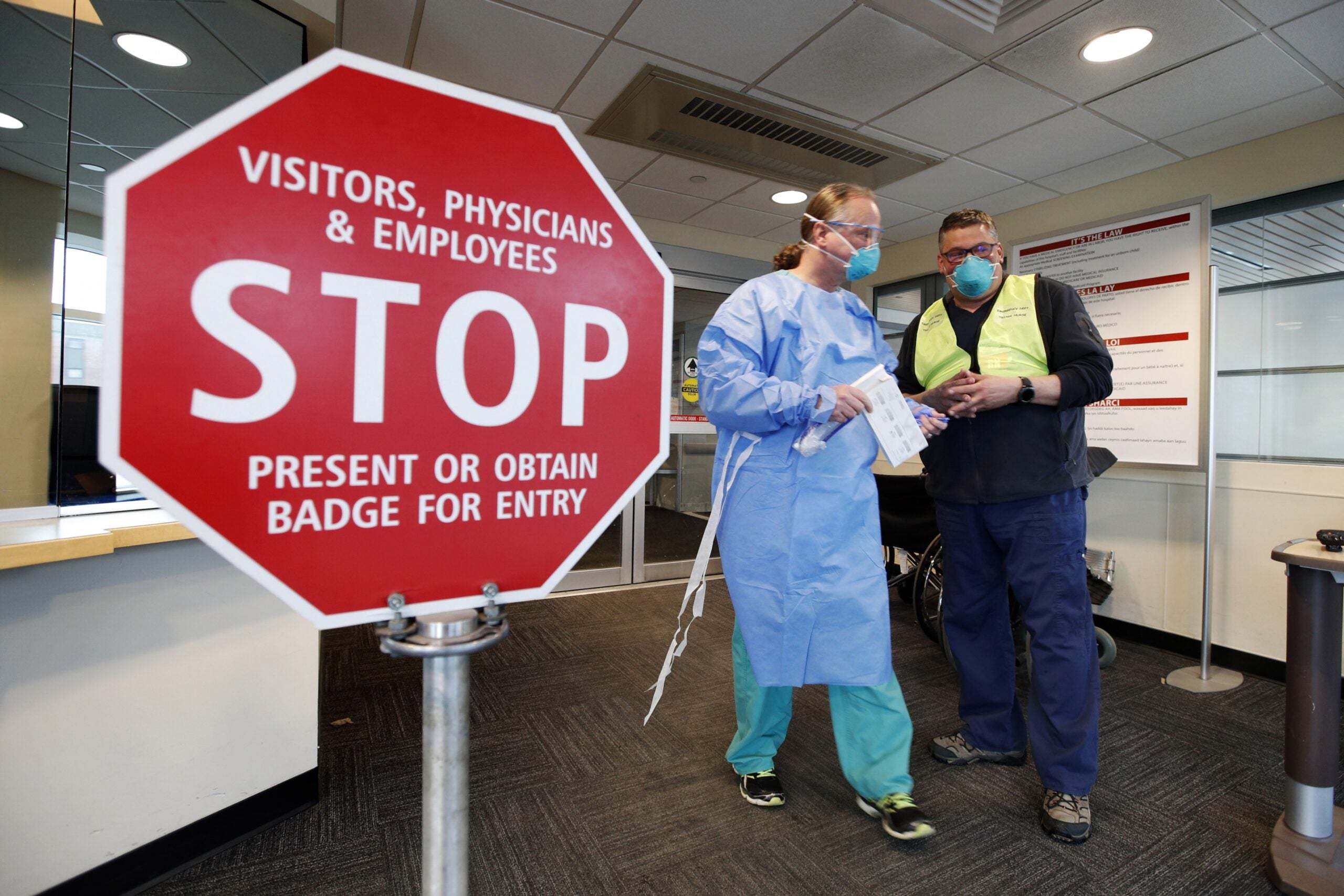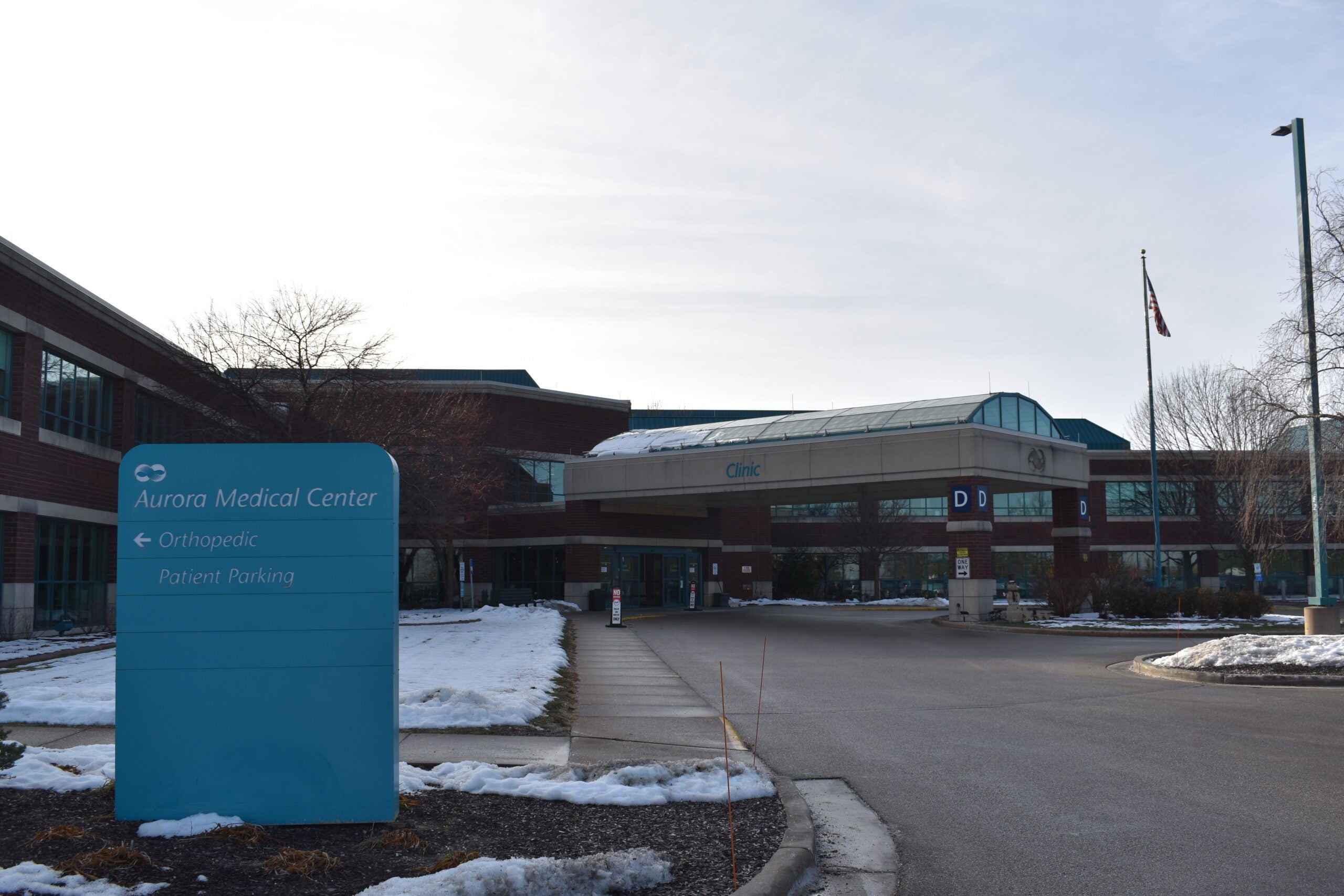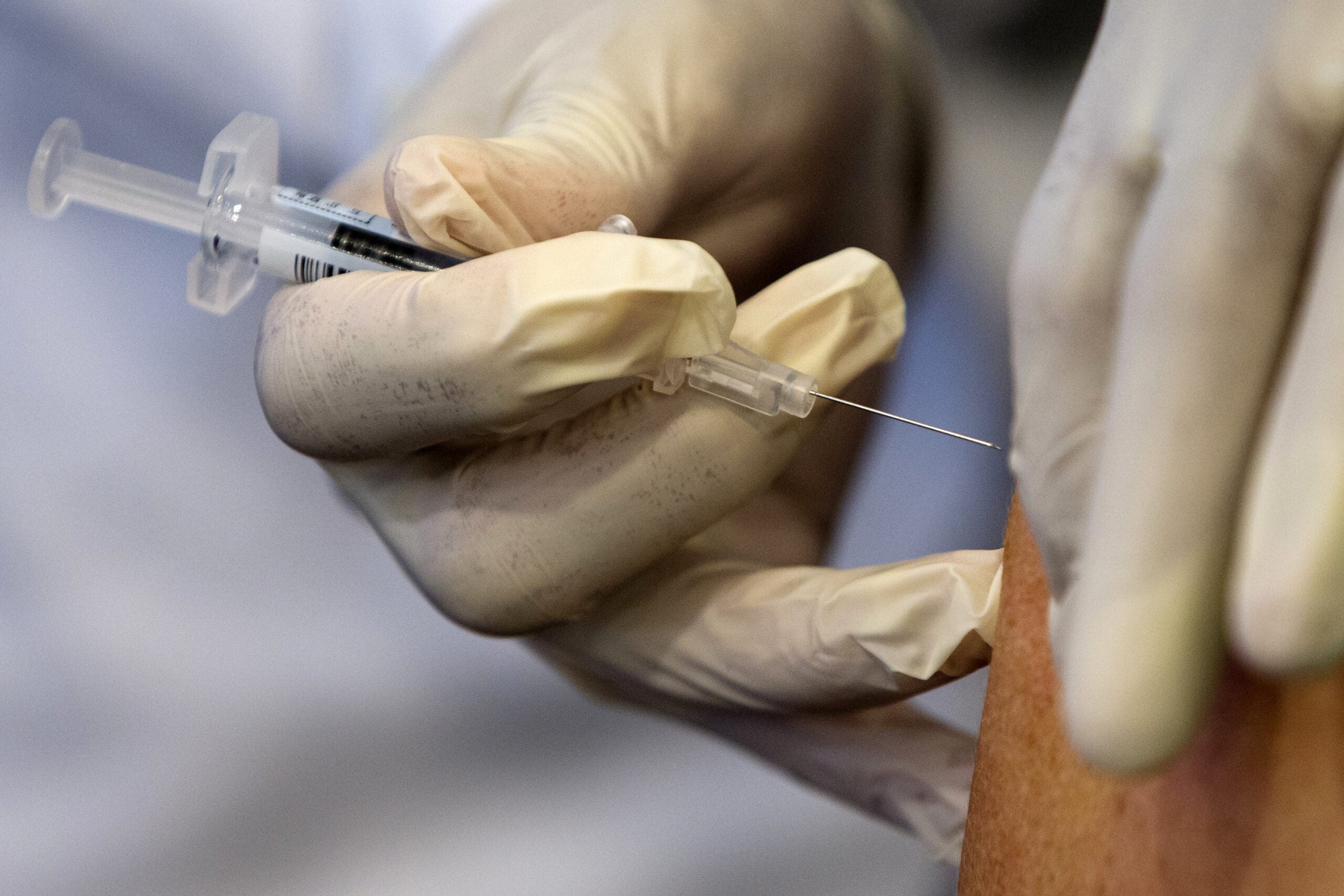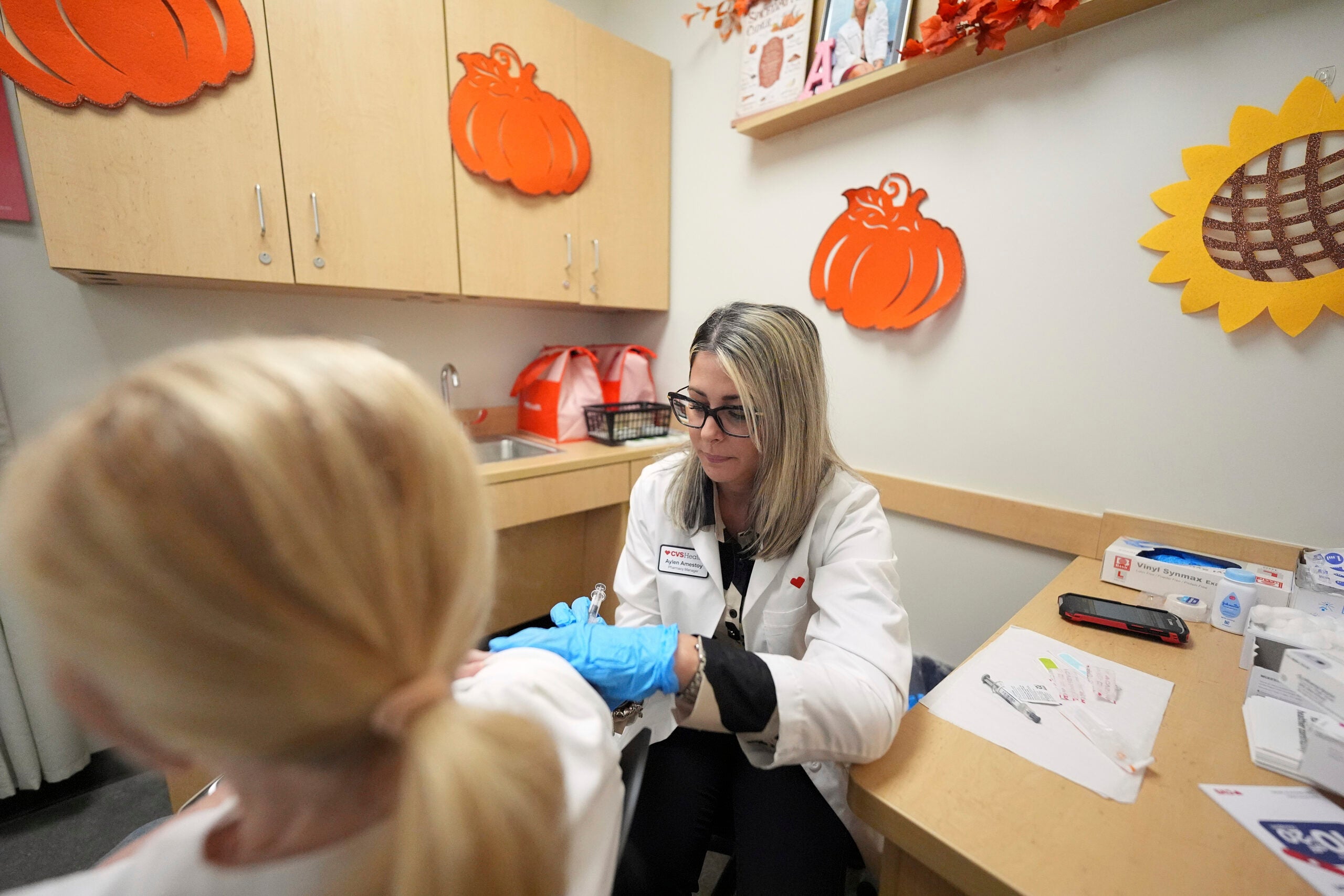Wisconsin’s surge of COVID-19 cases, driven by the omicron variant, has peaked, and new cases are expected to sharply decline in coming months, according to Mayo Clinic Health System computer models. Still, health experts warn that unless more people take vaccines and booster shots more seriously, future surges are inevitable.
During a Mayo Clinic press briefing Wednesday, data scientist David Sorlie said Wisconsin has gone “over the hump” in the latest surge of new COVID-19 cases. Sorlie is part of Mayo’s Predictive Analytics Task Force, which has tracked cases in the United States since the start of the pandemic and helped build predictive modeling allowing health system leaders to plan hospital operations.
“It’s already started to come back down, and that’s expected to continue pretty rapidly for the next few weeks,” Sorlie said.
News with a little more humanity
WPR’s “Wisconsin Today” newsletter keeps you connected to the state you love without feeling overwhelmed. No paywall. No agenda. No corporate filter.
He noted data shows the trend in Wisconsin appears to be about one week ahead of new cases reported in neighboring Minnesota, which are expected to peak soon.
Still, Dr. Conor Loftus, Mayo Clinic’s chair of outpatient practice, said the current situation at hospitals in Minnesota and across the Midwest is serious.
“We’ve got as many patients in the hospital this week as we did this time last week,” Loftus said. “So, this is not the time for letting our guard down. We need to continue to be extremely vigilant and work through this with social distancing, masking, avoiding crowds and so on and so forth.”
Data from the Wisconsin Department of Health Services show the state’s seven-day average hit an all-time high of 18,877 new cases on Jan. 19. That has fallen precipitously to a seven-day average of 9,012 new cases as of Tuesday.
Despite an expected lull in the next few months, Sorlie said the virus will continue to evolve citing news of a new omicron variant known as BA.2. He said if between 70 and 80 percent of people are vaccinated and have received booster shots, the future of the pandemic will be dramatically altered in the U.S.
“We’re in the driver seat here as long as we want to drive,” Sorlie said. “If a heavy majority of us take boosting seriously, we could make this the last substantial COVID surge.”
As of Tuesday, the DHS reported 59.1 percent of Wisconsin residents have been fully vaccinated.
In lieu of a strong majority of individuals getting vaccinated and boosted, the cycle of COVID-19 surges will repeat, Sorlie said.
“Will it ever be as bad as this surge?” Sorlie asked. “Hopefully not. But if we don’t want to take a hold of this opportunity that that science has given us, after this surge subsides we’re going to see another surge. It’s inevitable if we don’t want to take the power to prevent it.”
Wisconsin Public Radio, © Copyright 2026, Board of Regents of the University of Wisconsin System and Wisconsin Educational Communications Board.





